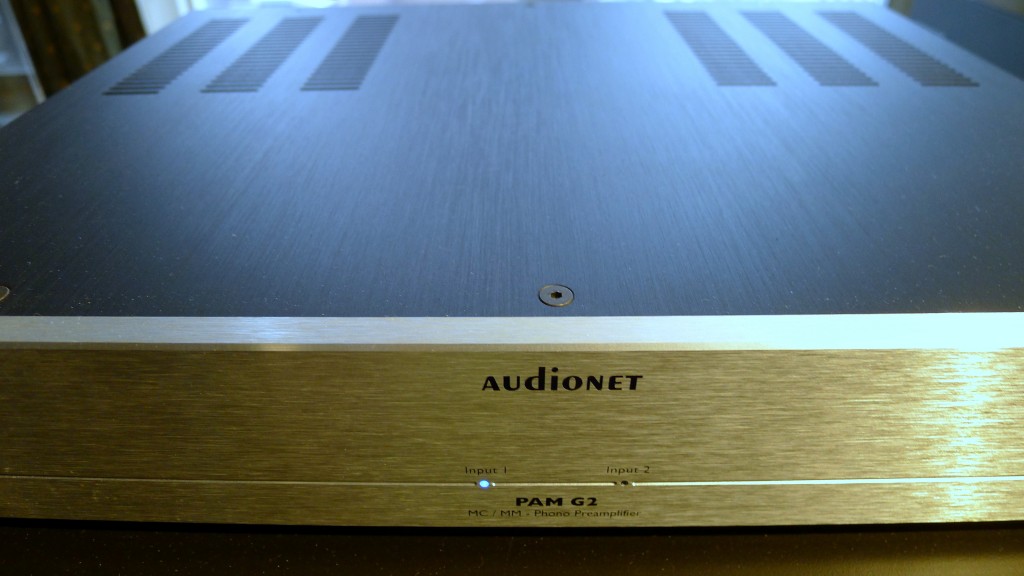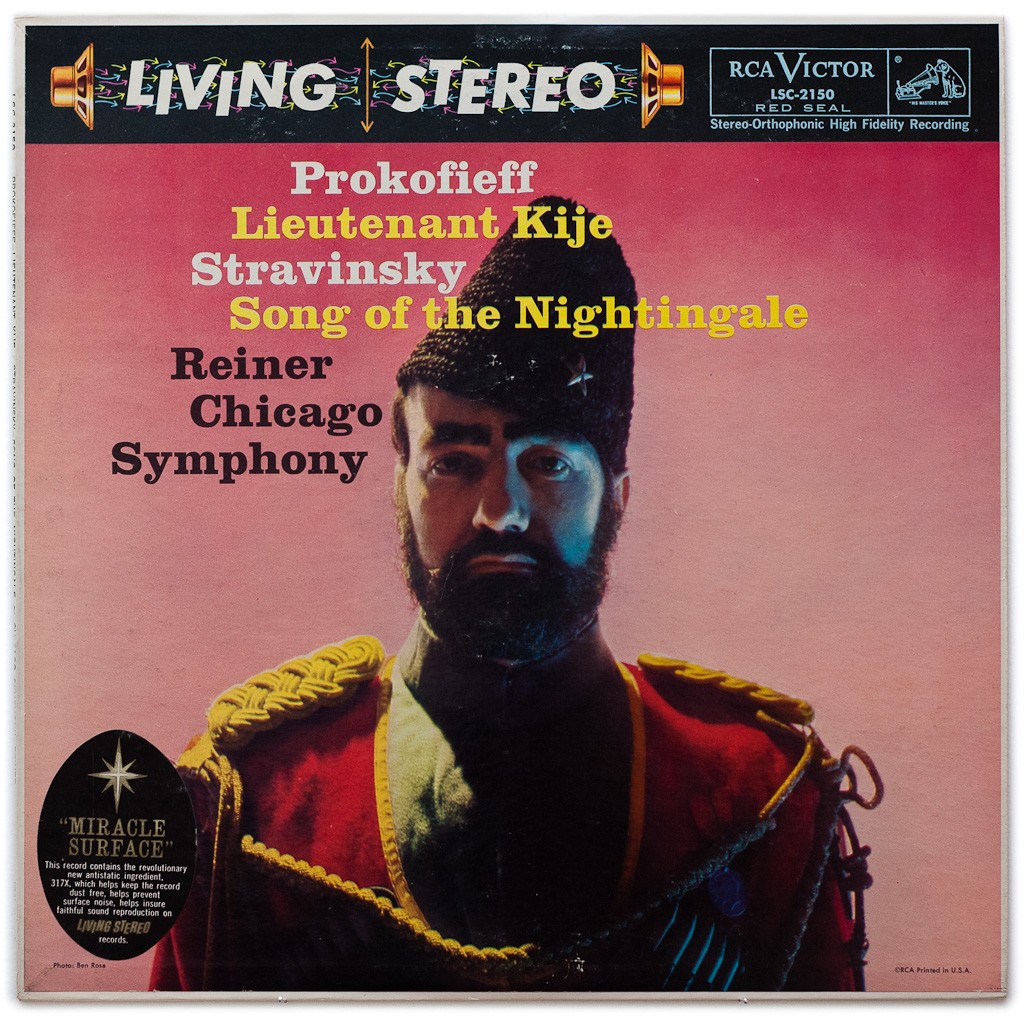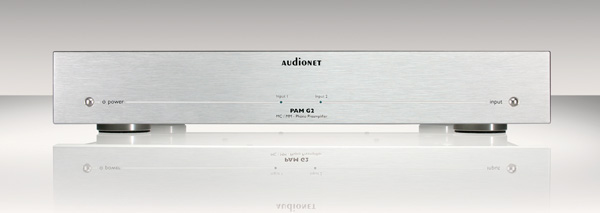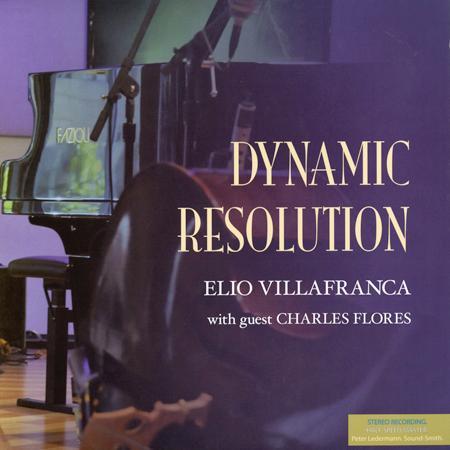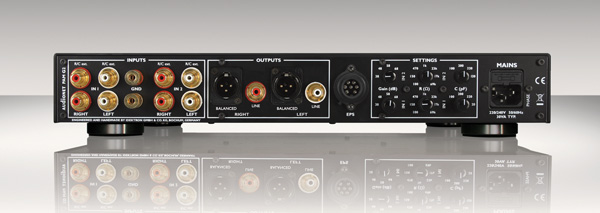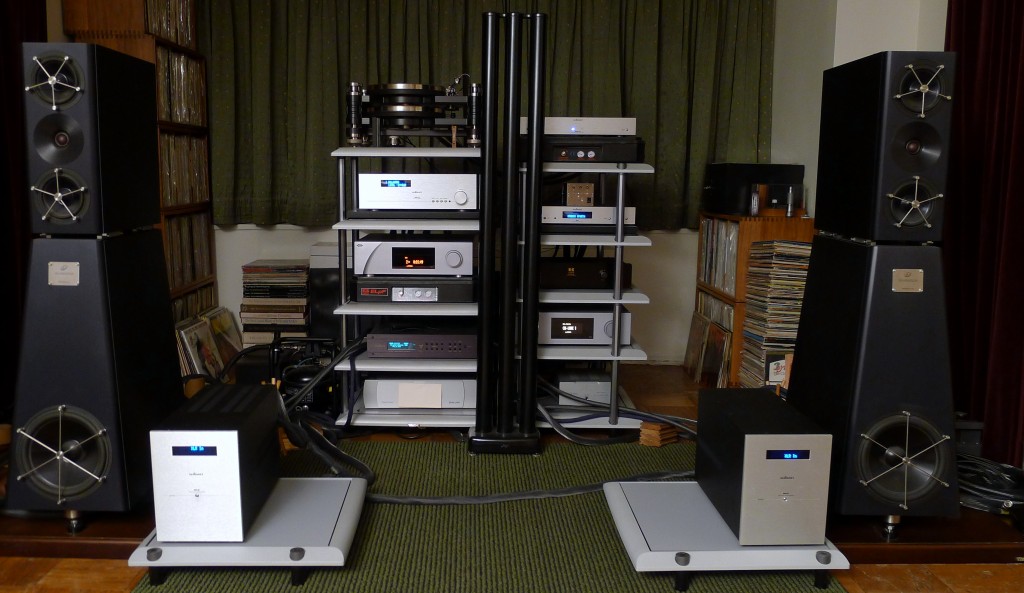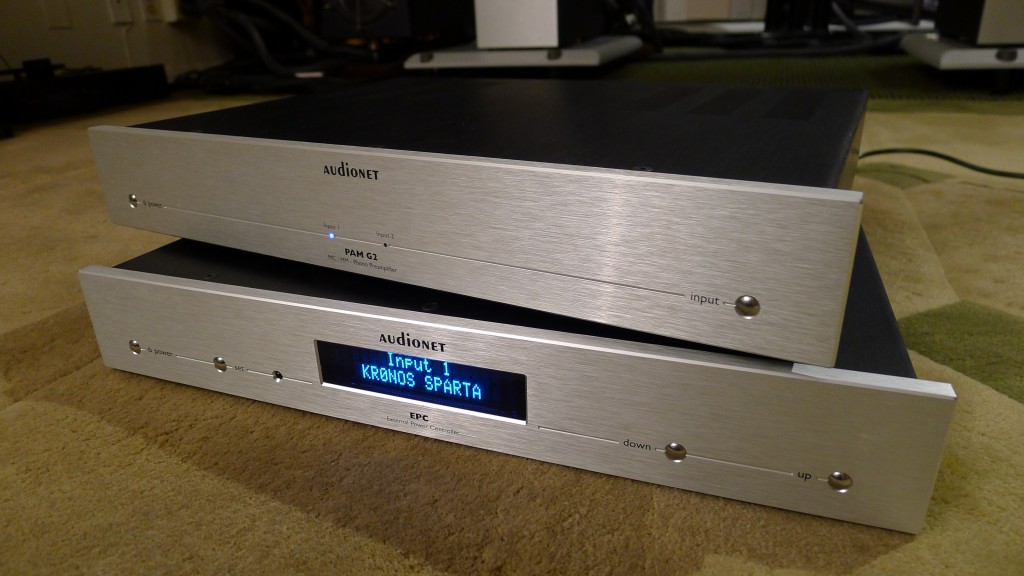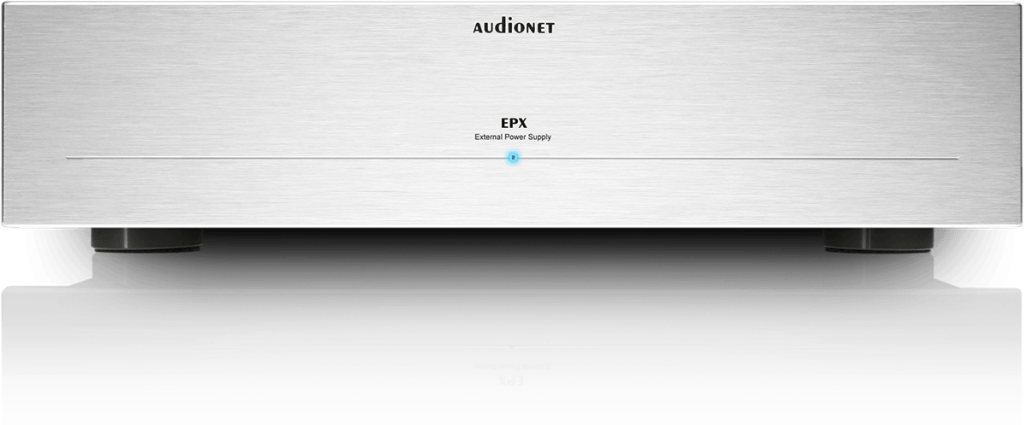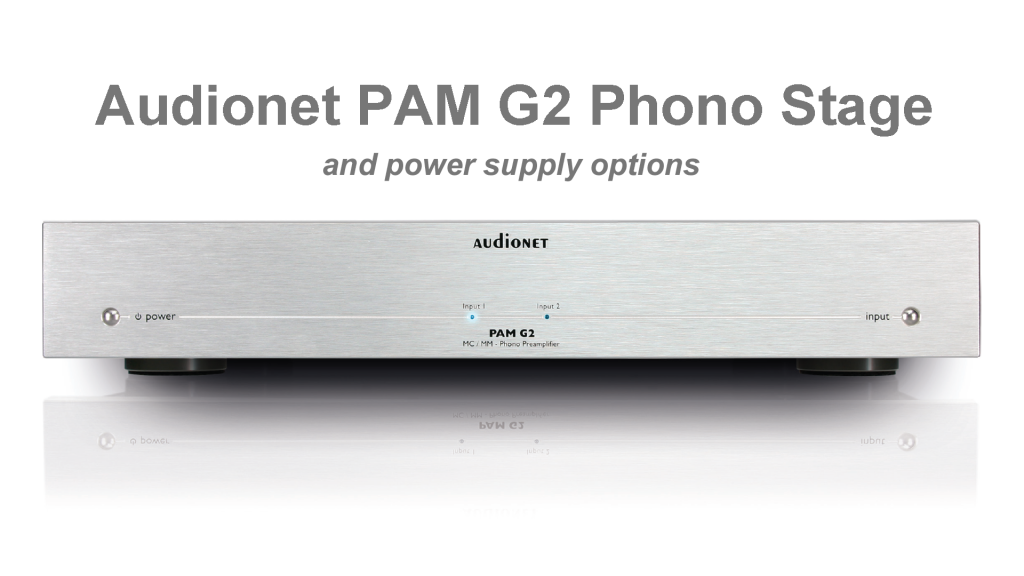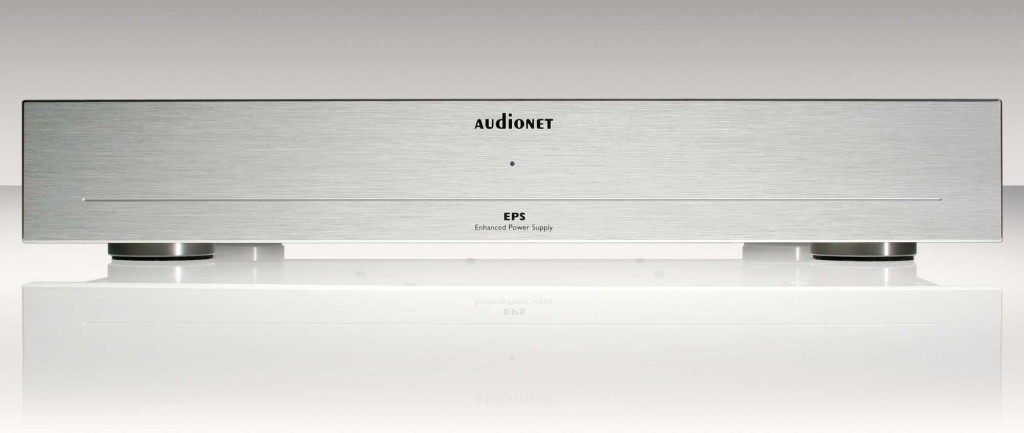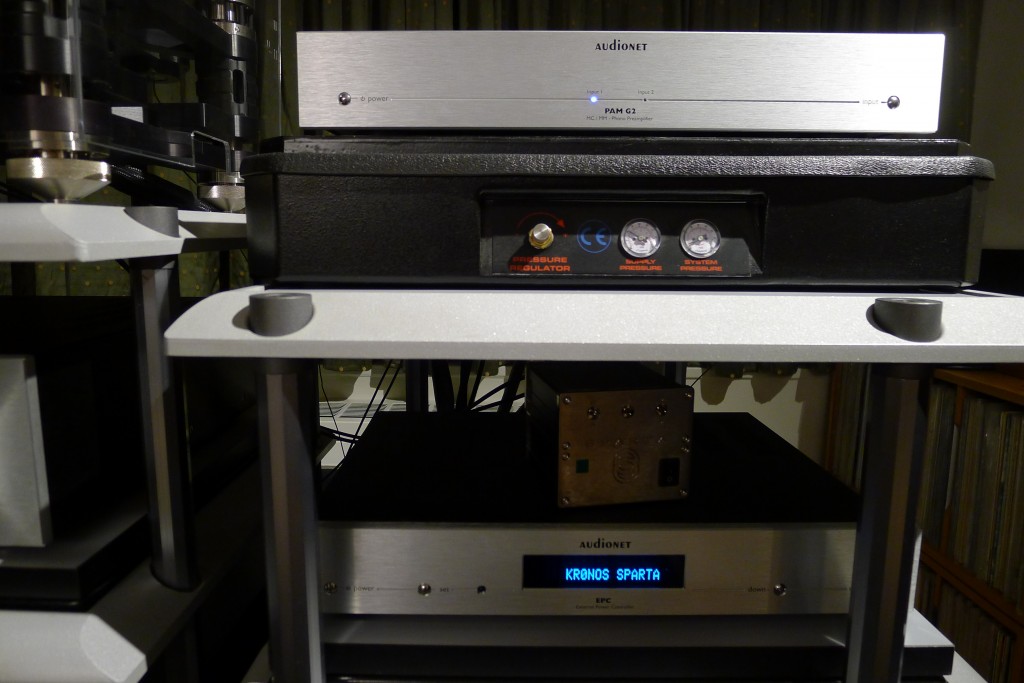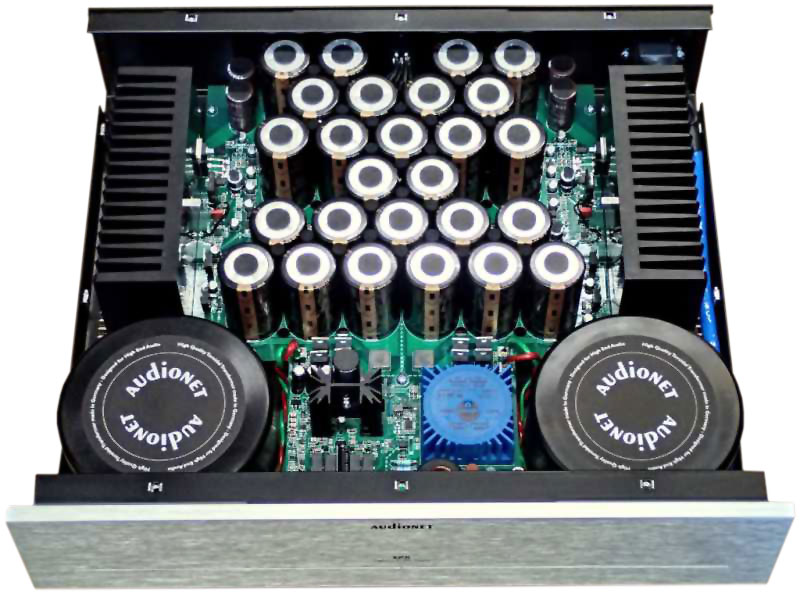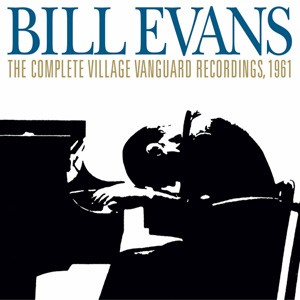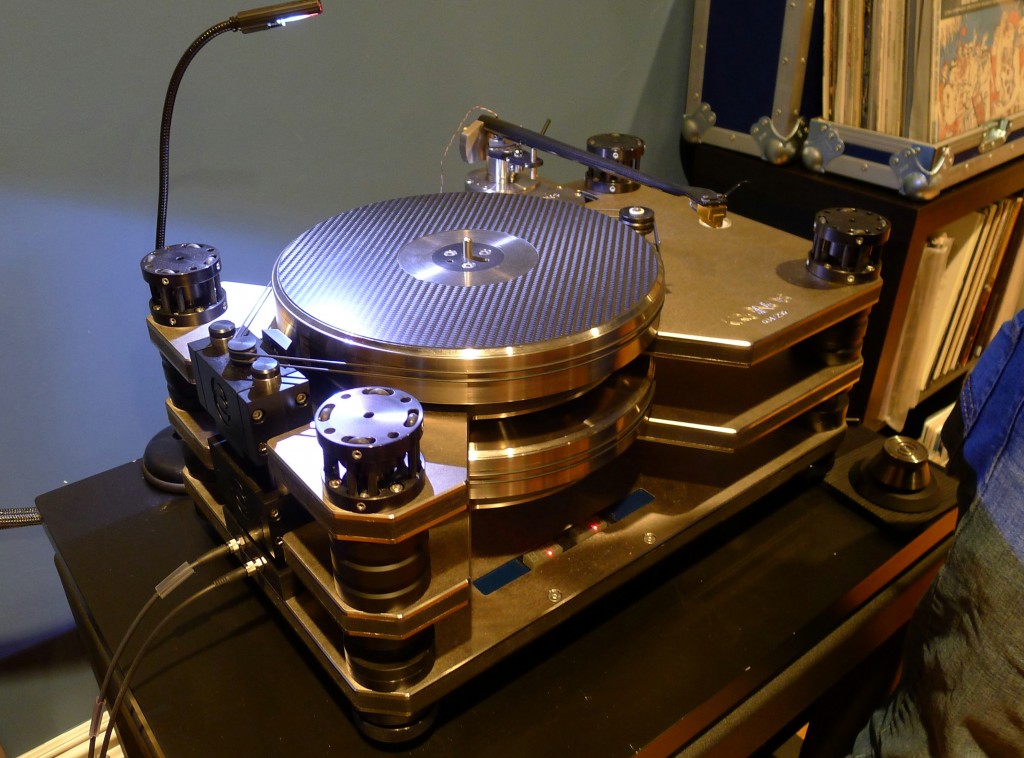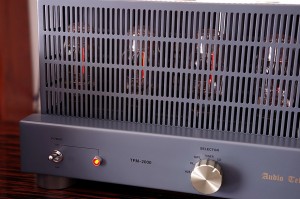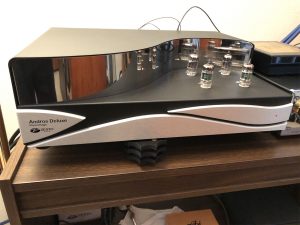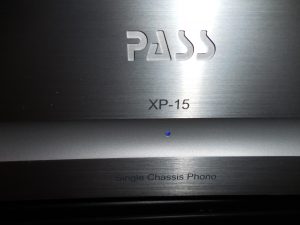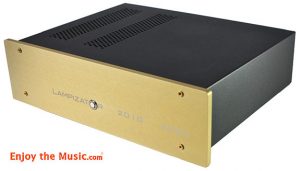At a Chicago Symphony Orchestra performance in Carnegie Hall one night I struck up a casual chat with the greybeard seated next to me. I learned he was a retired professional violinist and now, beyond being an enthusiast, he had a severe addiction. Classical music was his consuming passion. For each instrument we cared to mention, he offered up encyclopedic knowledge of who currently had the position, where they stood in the pecking order, who had the chair before the present occupant, and where they had moved. Ever meet one of those? Meanwhile his wife stood a little apart and struggled to stifle yawns.
In due course, I brought up orchestral style. Did he like the Chicago under Riccardo Muti, their new, high-profile music director? "No. Too careful. Not enough risk taking." When I prodded, he elaborated: "They are like most of the big name orchestras today. They err on the side of refinement. What I like is a fat sound. The last time the Chicago had that was under the great Fritz Reiner, many, many years ago."
A man of my own tastes. That this pairing occurred at the dawning of the stereo era and on the right label is most fortunate for us, as they left behind a veritable treasure chest of Golden Age LPs. The Chicagoans could have shared the same fate as George Szell and the Cleveland Orchestra, an equally legendary pairing, but under contract to Epic, a budget label. It's not just audiophiles—classical music connoisseurs are on board concerning these performances as well.
So, let's begin by listening to the esteemed Reiner/Chicago Prokofieff—Lieutenant Kije (LSC-2150). Audiophiles know that it is best heard on vinyl, and I can tell you the very best vinyl is the new Analogue Productions 33⅓ reissue by Acoustic Sounds. Chad and team seem to have gotten everything right in their latest batch of 33⅓ reissues.
'Stat-like Transparency
Digital weaves a different soundstage texture than analog and that is probably the biggest difference between the two mediums and its biggest downside. The weave of the cloth is flat; digital doesn't give you enough to chew on. This, in turn, is responsible for flat images that lack dimension.
Speaking of interesting soundstage surfaces, the Audionet PAM G2 Phono Preamplifier especially when paired with the companion PRE G2 line stage, is capable of a special kind of transparency that is usually reserved for electrostatic or planar speakers. Only now we're talking about a component, not a speaker.
When you're in a prime seat in a good hall, music is open and transparent. Sound waves move air and air offers no resistance, right? When I'm in Carnegie Hall, I can close my eyes and zoom in on the broad tone presented by the first violin section and easily gauge its extent and the number of players. There are no blurry areas. That broad tone of the string section has texture: it has depth and inner detail.
The Audionet PAM G2 Phono similarly leaves the view permeable. The "broad tone" is only the beginning of your perception; it can be parsed down to very fine-grained sound pixels. Now, if it was blocked, the broad tone is all you would get. You would be able to discern the note's loudness, overall size, and pitch. Beyond that, further insight is limited.
This kind of deep transparency is what electrostats and Maggies are famous for. A point of difference to note is that these panel speakers package the transparency in a light-weight, airy presentation. The PAM G2 offers completely satisfying weight and tonal saturation.
I want to bring to your attention a newly recorded, direct-to-disk, half-speed mastered LP: Dynamic Resolution (16 eyes LP 001). The program consists of duets for piano and upright bass by Elio Villafranca and Charles Flores, a pair of accomplished jazz artists with serious classical training.
While I'm not crazy about the introspective, Latin jazz-inflected tunes, I get a very real charge from the sound on this purist recording. It is phenomenal! According to the liner notes, four mikes were used straight to the mixer with no intervening amplification.
The double bass on Dynamic Resolution, played back on the PAM G2, is very full, resonant, but not boomy. And not too tight—you get a solid pitch value along with the heavy body. The notes are often echoed with a companion slap on the neck of the instrument from hard plucked strings, and there is occasional buzzing when the string is loosely stopped. The slapping sound appears consistently slightly to the left of the instrument itself. I wonder why? (On the back of the jacket there's a photo showing two mikes on the bass—one at the position of the f holes in front, the other at the neck.)
The instruments on Dynamic Resolution bear little resemblance to what I hear when I go to a jazz club, let alone on recordings—they're better, they sound exactly as they do in life. In most (make that all) clubs, the bass is amplified for balancing purposes and quite often so is the piano. You know what happens as soon as you put a mike, a mixing board, and a PA system in front of an instrument—any semblance of naturalism is lost. The double bass should be rich and complex. Amplification results in overly tight, dry, and reduced complexity.
I'm saddened to think this might be the only way people get to hear the double bass nowadays. Few jazz venues opt out of the practice. Fortunately for us, the classical music world is still a hold out. (Although the heathens are at the gate: There is talk of introducing "subtle" amplification in the concert hall.) We've got to stand firm and let the producers and promoters know: No amplification in the concert hall—period.
No Solid-State Signature
What are the hallmarks of a solid-state signature? What sorts of things come to mind? For me, it means speed, power, and control. It also could mean grainy, aggressive, and thin.
All I can tell you is when I swapped in the PAM G2 for my tubed Allnic phono stage, what surprised me most was that the expected timbral disjunct did not occur. Timbre is usually a dead giveaway to the topology of a device. Yes, there are hints the PAM G2 is solid-state, but not in its portrayal of timbre.
It was the same with the other Audionet Reference Level gear I've auditioned—the MAX monoblocks, which are now my reference, and the PRE G2 Preamplifier They all have an inherently neutral profile—what you feed in is what you get out—but there is no solid-state signature. These machines have smooth textures, lots of timbral variation, full body, and warmth like tubes, but also the precision, speed, and power of solid-state. But the PAM G2 edges even closer to valves than the others.
I've been waiting patiently for this gear that is capable of doing it all, resolving the paradoxical playback demands of neutrality and beauty. It's arrived. The PAM G2 is certainly deserving of membership in this select group of next gen advanced solid-state components.
System Synergy: Dynamic, Clear, Powerful
The PAM G2 was fed by my reference Kronos Sparta turntable. (A recent acquisition that zoomed into another exclusive grouping I call "exit components," as in: This Is It. The Hunt Is Over. The High End is loaded with these exclusive clans.) The Airtight PC1s cartridge was on the Helena tonearm. The PAM G2 in turn fed my Trinity Preamplifier. The new CH Precision L1 Preamplifier was swapped in early on (review coming soon). Both preamplifiers yielded excellent results.
But when I slipped in the PRE G2 to create an all Audionet electronics line-up we got that very special transparency I described above. With the Audionet PAM G2 ⇒ PRE G2 ⇒ MAX Monoblocks, we achieved a higher orbit; a synergy develops when the electronics are from one manufacturer. This is expected. The big sound of the PAM G2 was made bigger, dynamics more explosive. The PAM G2 got more of that juicy, zaftig midrange out of original Rudy Van Gelder Blue Note pressings that some audiophiles crave.
PAM G2 and EPC
Setup
I got to audition the PAM G2 twice. First, with the Audionet EPC, a $6700 power supply upgrade to the basic phono stage. Later, the PAM G2 returned with the larger, heavier, Audionet EPX Enhanced Power Supply Max ($10,100) replacing the EPC. I'll describe these power supply options in the postscript that follows the review.
The PAM G2 went on my Vibraplane ELpF active air support. I usually don't put phono stages on the ELpF, reserving it for components with moving mechanisms, such as the turntable or CD drive. But the Kronos Sparta is a fully suspended turntable and, as such, has a distinct aversion to platforms with suspensions. So an ELpF was freed up.
It was a good thing, too, because it proved to jump start the PAM G2, which came down with an impressive case of "the mores"—more density and fullness, more clarity and more power. It lets you hear deeper into the performance. I'm going to have to revisit the ELpF usage elsewhere.
Cables were easy. I used Elation! power cords and single-ended interconnects exclusively, along with the new XPander Power Distributor. Audionet loves Kubala•Sosna cables.
I followed the importers recommendation and left the gear on all the time. It gets slightly warm and will sound good on the first LP, getting better as the night grows long and achieving optimum playback after two hours with signal.
There are too many unique features and specs to list them here. Please consult the website for more info.
Grounding Options
If you opt to use one of the external power supplies, the AC cord plugs into the new box and is removed from the PAM G2. An umbilical attaches between the two chassis. Here's a nice little tweak: run a second ground wire from the PAM G2—you will get a performance boost. There are two ways to do this: you can get a manufacturer-provided cord that attaches to the ground post of the PAM G2 on one end and plugs into an AC outlet on the other side. Alternately, the importer can provide a special AC cord with the hot plugs disabled—only the ground connection is made. Plug this into the PAM G2s IEC jack and your AC outlet.
I was told they were equally good and opted to use the additional AC power cord. Once you hear it, you won't want to remove it. Grounding is a big, fertile concern today being actively explored by many creative minds.
Conclusion
No doubt you're aware of the recent upsurge in turntable sales and the reported round-the-clock operation of LP pressing plants. The second coming of vinyl is not just Michael Fremer's passionate hobbyhorse; it is backed up by sales statistics. Today's average audiophile is likely to view analog as the gold standard; digital is measured by how close it comes to vinyl. From all reports, hordes of young neophytes are jumping on the bandwagon, too.
It is a wonderful time to be an analog devotee. On the software side, we have the highest quality reissues available. On the hardware side, terrific strides have been made in turntable design. In amplification, the big news is the arrival of next gen components. Until now, you had to decide whether to go with tubes to get the soft, musical virtues or solid-state for the objective, measurable strengths. The next gen gear straddles these constraints imposed by topology and is able to satisfy both masters. The Audionet PAM G2 Phono Preamplifier belongs in this select group.
The basic PAM G2 Phono amplifier gives you a good taste of this top-level, next gen performance. That it is able to accomplish this at a mid-level price point is unprecedented. When you're ready to scale the heights, there's an upgrade path of external power supplies. The good thing here is they all build upon the PAM G2, so your original investment in the PAM G2 remains intact and you upgrade with smaller cash infusions. (This does not apply to the EPC; due to the necessary structural changes, no upgrade is possible.)
PAM G2 MC/MM Phono Preamplifier
Retail: $10,100
EPX Enhanced Power supply Max
Retail: $10,100
Audionet
en.audionet.de
Distributor
GTT Audio/Video
908-850-3092
[email protected]
www.gttaudio.com
Postscript: Power Supply Options for the PAM G2
Photo courtesy of Peter Breuninger
Audionet likes to provide something for everyone. Consequently, they offer a multitude of phono preamplifier configurations. So many, in fact, it can become confusing. To explain the options in detail, the distributor provided an on-site product walkthrough and demo.
One Saturday afternoon, Peter Breuninger, shooting a video for AV Showrooms, Louis Desjardins, the designer and proprietor of Kronos Audio Products, and Joe Kubala, the cable guy, along with several of our significant others, met up with Bill Parish at GTT Audio. I dare say it made for a fun party. Good food and good talk.
And good sound. We had GTT's main demo room at our disposal for a day and a half. That meant the sonic chain consisted of a Kronos Limited Edition Pro Turntable with Air Tight PC1 Supreme cartridge and Audionet electronics: PAM G2 Phono, PRE G2 line stage, and MAX monoblocks. The YG Acoustics Sonja 1.3 speakers were bi-amped (one pair for the main module and one for the bass units). The rig came together with K•S Elation! wiring throughout, including the worthy XPander Power Distributor.
Photo courtesy of Peter Breuninger
Here's a rundown of the phono product line. The main unit is the single chassis PAM G2, an MM/MC phono pre available with one input (MSRP $10,100), or two ($14,200). All of the user adjustments (gain, loading, and capacitance) are on the rear of the chassis—no need to ever open up the device. The two input option features completely independent settings.
Specs for the single chassis PAM G2 include:
- 100 VA toroidal transformer
- 40,000 µF capacitance
The first upgrade is the EPS G2 (Enhanced Power Supply, $4050), a slim external chassis with a full-size footprint, which attaches with a single umbilical power cable.
This beefed-up power supply boosts the numbers as follows:
- 2 x 100 VA toroid core transformers
- 260,000 μF smoothing capacitance
- Separate 10 VA transformer for digital voltages
The EPC (Enhanced Power Supply Controller, $6,700) is the sonic equivalent of the EPS G2—it has the same specs—but gives you remote control functionality. With the EPC, you can adjust loading, gain, and capacitance from the listening seat. All of these controls are removed from the PAM G2 and relocated to the EPC. Note: Because this involves a structural change to the PAM G2 chassis, it is irreversible. It must be specified when placing the order, plus, note that the structural change means the other power supply options are not available.
Another level beyond the EPC or EPS is the larger, heavier, EPX (Enhanced Power Supply Max, $10,100), with the following:
- 2 x 200 VA toroid core transformers
- 576.000 μF filter capacitance
- Separate 10 VA transformer for digital voltages
For comparisons we used The Bill Evans Trio The Complete Village Vanguard Recordings, 1961 (Fantasy, 180 gram, 4 LP set). This is the complete material from the historic live taping that resulted in the Waltz for Debby and Sunday at the Village Vanguard LPs. If you are a fan of those (and who isn't), this is a must-have set. The legendary Scott LaFaro is on bass; Paul Motian on drums.
It was all analog, all weekend. It didn't even occur to anyone to suggest digital.
Through the basic, single-chassis PAM G2, the GTT big room was in excellent voice. The evanescent communication among musicians that happens when things click was much in evidence. The trio sounded free—it had that combination of continuous musical flow along with insightful definition. Frequency response was even and accurate; tone, weight and dynamics were exactly to my liking.
By moving up to the PAM G2 with outboard EPS, an additional $4K, you gain weight and body. This was apparent even before the trio began playing, just by the chatter and tinkling glasses of the live audience as they settled. Double bass had more flesh and roundness. Paul Motian's cymbal work was more intricate and detailed. The imaging was precise without being X-Ray analytical. And Lynn noticed, "You weren't getting the room before [without the EPS]."
When we introduced the EPX, an injection of $10K, apart from another boost to weight and substance, instruments began to reveal important subtleties of timbre and action: the hammers on the steel strings of the piano; the dense, complex overtones and natural lustre of the double bass; the delicate filigree of the cymbal work. The top end became sweeter, the bottom end tighter. Louis judged it more complete and, therefore, less tiring—less work for your brain to fill in the missing stuff.
Since time allowed for a little aside after all the PAM G2 iterations, we did an extra A/B comparing the big Kronos Limited Edition Pro table to the Sparta. The difference between the two was like that between the EPS and the EPX. Big things like body and depth of tone improved; little things like reduced edginess, faster transients, and more relaxation. Yup, you get what you pay for.
Conclusions
This was a convincing demo and I drew unambiguous conclusions, yet I'm still scratching my head. In these extensive comparisons the actual circuitry processing the LP signal—all within the PAM G2—never changed. The single variable was the power supply.
This was not totally news to me. I knew of other component brands which claimed the major difference as you step up the line is the power supply. Still, I was caught off guard. I always assumed that was a simplified, general explanation and remained unconvinced. Not anymore. The Audionet demo supplied incontrovertible evidence. What a difference a power supply makes!




